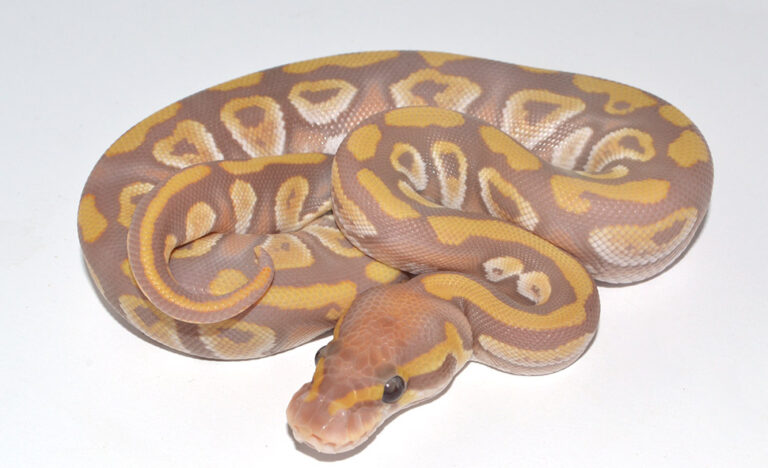Buyer’s Guide: Dreamsicle Project

One of the most highly valued projects here at KINOVA and in the Ball Python industry at large is the Lavender Albino Piebald, more commonly known as the Dreamsicle.
We get many inquiries from potential buyers regarding the best way to get involved and start making their own Dreamsicles. Without previous experience working double recessive projects, most lack the knowledge – and as a result, the confidence – to make a smart purchase.
If you’re interested in jumping into the Dreamsicle project, here’s an outline of your options and what to expect.
Note: As prices change over time, initial investment costs and profit scenarios have been excluded to ensure ongoing relevance.
Option #1: Delayed Gratification
Animals Needed:
- 1.0 Lavender Albino
- 0.1 Piebald
OR - 1.0 Piebald
- 0.1 Lavender Albino
Odds of producing Dreamsicles:
0 (initial breeding), 1:16 per egg (subsequent)
Time required:
≥ 4 years with optimal odds (typically 4-5 years with optimal odds)
Notes:
This is a two step process. No visual Dreamsicles can be produced from this pair. First you must breed them to produce double het Lavender Albino Piebalds (aka double het Dreamsicles), then raise those offspring up and breed them together for a 1:16 chance at a visual Dreamsicle.
Option #2: The Long Shot
Animals Needed:
- 1.1 Double Het Dreamsicles
Odds of producing Dreamsicles:
1:16 per egg
Time required:
1-2 breeding seasons
Notes:
Compared to option #1, this approach cuts 2-3 years and a complete breeding cycle out of the process. You can produce a visual Dreamsicle from this pair, but your odds are 1:!6, which is a long shot. It might take two or more clutches to hit the odds.
Option #3: The Modest Mindset
Animals Needed:
- 1.0 Lavender Albino Het Piebald or Piebald Het Lavender
- 0.1 Double Het Lavender Albino Piebald
Odds of producing Dreamsicles:
1:8 per egg
Time required:
1-2 breeding seasons
Notes:
The time required here is the same as the previous example, however the odds are now doubled. Each egg has a 1:8 chance of being a visual Dreamsicle, meaning most clutches from this pair should produce a Dreamsicle.
Option #4: No Luck Necessary
Animals Needed:
- 1.0 Lavender Albino Het Piebald
- 0.1 Piebald Het Lavender Albino
OR - 1.0 Piebald Het Lavender Albino
- 0.1 Lavender Albino Het Piebald
Odds of producing Dreamsicles:
1:4 per egg
Time required:
1 breeding season
Notes:
With odds like these, you have a great chance at producing at least one Dreamsicle in every clutch.
Option #5: The Pro Approach
Animals Needed:
- 1.0 Dreamsicle
- 0.1 Piebald Het Lavender Albino or Lavender Albino Het Piebald
Odds of producing Dreamsicles:
1:2 per egg
Time required:
1 breeding season
Notes:
You’ve balanced the scale with a 50/50 shot, meaning most clutches from this pair will produce Dreamsicles with certainty.
Option #6: Nothing but Dreams
Animals Needed:
- 1.0 Dreamsicle
- 0.1 Dreamsicle
Odds of producing Dreamsicles:
1:1 per egg
Time required:
1 breeding season
Notes:
This gets you nothing but Dreamsicles, 100%. However, each previous option offered a greater and greater return on initial investment. This is not the case in this scenario. At present, the cost of purchasing a pair of Dreamsicles does not offer a better return on investment than option #5 + one extra female.
We hope this helped demystify the variety of approaches you can take to pursue the Dreamsicle project. We’d love to help you on your journey. To see KINOVA’s currently available Dreamsicle project animals, click here.
